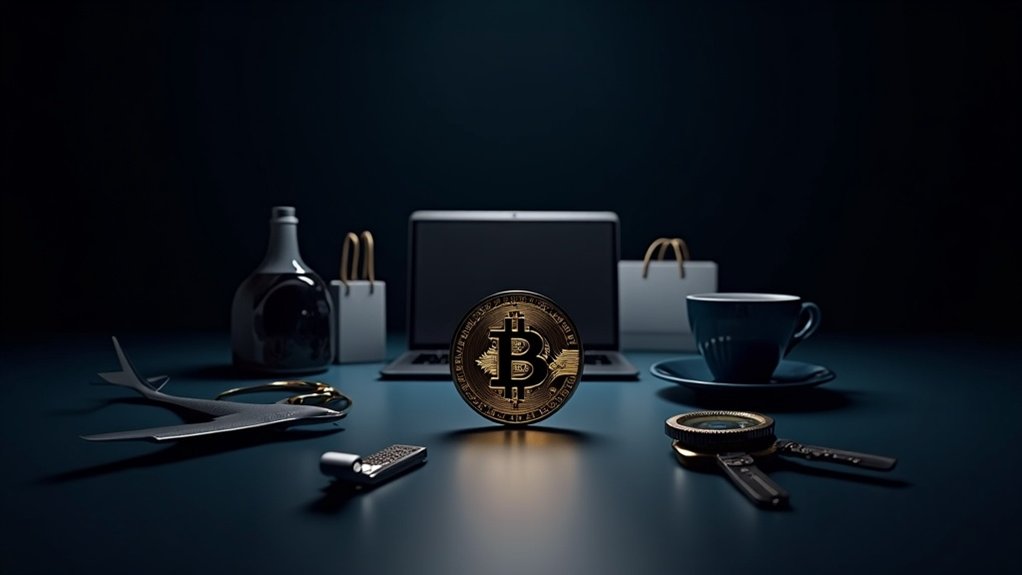Token release refers to the scheduled availability of cryptocurrencies previously locked in smart contracts. This mechanism prevents early investors from dumping coins immediately after launch, reducing market volatility. Releases matter because they directly impact supply-demand dynamics—more tokens in circulation often means increased selling pressure. They demonstrate team commitment while improving liquidity and trading volume. Smart projects use gradual vesting schedules instead of cliff releases. Savvy investors always track these events before the floodgates open.
Cryptocurrency tokens don’t always hit the market all at once. Instead, they’re often released gradually through a process called token release. It’s pretty straightforward – locked tokens sit in smart contracts until specific conditions trigger their liberation into circulation. Think of it like a time-released capsule for digital assets.
These tokens get locked for good reason. Project teams don’t want early investors dumping everything immediately after launch. That would tank prices faster than you can say “bear market.” Locking tokens shows commitment. It forces team members to stick around rather than grab quick profits and disappear. Smart move.
Locking tokens prevents the pump-and-dump catastrophe while keeping team members invested in long-term success.
The mechanics are simple. Smart contracts hold tokens hostage until predetermined conditions are met. Could be time-based (six months after launch) or milestone-based (when the platform hits 100,000 users). When conditions are satisfied, boom – tokens automatically liberate. No human intervention needed. Similar to proof of stake systems, token locking helps maintain network stability and security.
Token releases matter because they directly impact market dynamics. More tokens in circulation means more potential selling pressure. Basic supply and demand. Large releases can send prices tumbling if too many holders decide to cash out simultaneously. Not exactly breaking news.
Well-designed projects implement gradual vesting schedules. A little release here, a little there. This prevents market floods and catastrophic price drops. Bitcoin barely notices new supply because most coins already circulate. Newer projects? Different story entirely.
Token releases aren’t all doom and gloom. They improve liquidity, making markets more efficient. More tokens means more trading volume. More trading means better price discovery. Everyone wins. Some projects use linear unlock mechanisms to distribute tokens gradually over time, which typically results in more predictable market behavior compared to cliff unlocks.
The risks remain real, though. Sudden large releases can spook investors. Nobody likes seeing their investment diluted overnight. Projects sometimes delay or accelerate release schedules based on market conditions, which feels sketchy at best.
Understanding token release schedules is critical for anyone serious about crypto investing. It’s all public information in project whitepapers. Read them. Or don’t. Just don’t be surprised when that unexpected token dump happens and prices react accordingly.
Frequently Asked Questions
How Do Token Unlocks Affect Cryptocurrency Price Volatility?
Token releases inject fresh supply into the market, often triggering price swings. When locked tokens suddenly become tradable, early investors dump holdings. Boom—instant volatility.
Gradual vesting schedules help, but markets still react nervously to upcoming releases. Smart money watches these calendars religiously.
Large-scale releases? Brace for a rollercoaster. Mature cryptocurrencies barely flinch, while newer tokens get hammered. Transparency helps, but let’s be real—increased selling pressure rarely boosts prices.
Can Investors Hedge Against Upcoming Token Unlocks?
Yes, investors can hedge against token releases. They’ve got options – literally.
Using futures contracts to lock in prices, buying put options for downside protection, or setting up collars. Some just diversify their portfolio or convert to stablecoins before the release hits.
Smart money tracks release calendars religiously. Others gradually reduce positions ahead of time.
Perpetual swaps work too, if there’s enough liquidity.
The crypto game never sleeps, and neither do the hedging strategies.
Are Token Unlocks Regulated by Financial Authorities?
Token releases aren’t specifically regulated in most places.
Financial authorities focus more on broader crypto activities like token sales and trading. No universal framework exists. Some jurisdictions might consider releases under securities laws if tokens resemble investments.
The regulatory landscape? Patchy at best. Authorities are more concerned with market manipulation risks and investor protection than the release schedules themselves.
Projects often voluntarily disclose release details to avoid regulatory headaches later.
Regulatory clarity? Still waiting.
How Do Exchanges Prepare for Major Token Unlock Events?
Exchanges beef up their infrastructure to handle increased transaction volumes during release events.
They deploy TWAP and VWAP strategies to minimize price impact and use derivatives to hedge against volatility.
Smart contract monitoring tools track release schedules automatically. Some exchanges coordinate with token teams for transparency.
They also boost market maker activity to maintain liquidity and educate users about upcoming releases.
Preparation is essential—nobody wants their platform crashing when millions of tokens suddenly flood the market.
What Tools Track Upcoming Token Unlocks Across Different Blockchains?
Several specialized tools track upcoming token releases across blockchains. CoinMarketCap and CryptoRank offer extensive release data for traders.
DropsTab monitors over 9,000 cryptocurrencies with customizable dashboards. The Tie Terminal includes a Release Screener with filtering capabilities.
Bitquery APIs enable tracking and alerts for upcoming events. DefiLlama integrates release tracking within its DeFi data.
Forgd even simulates price performance based on projected sell pressure. Each serves different user needs—from casual investors to research pros.









